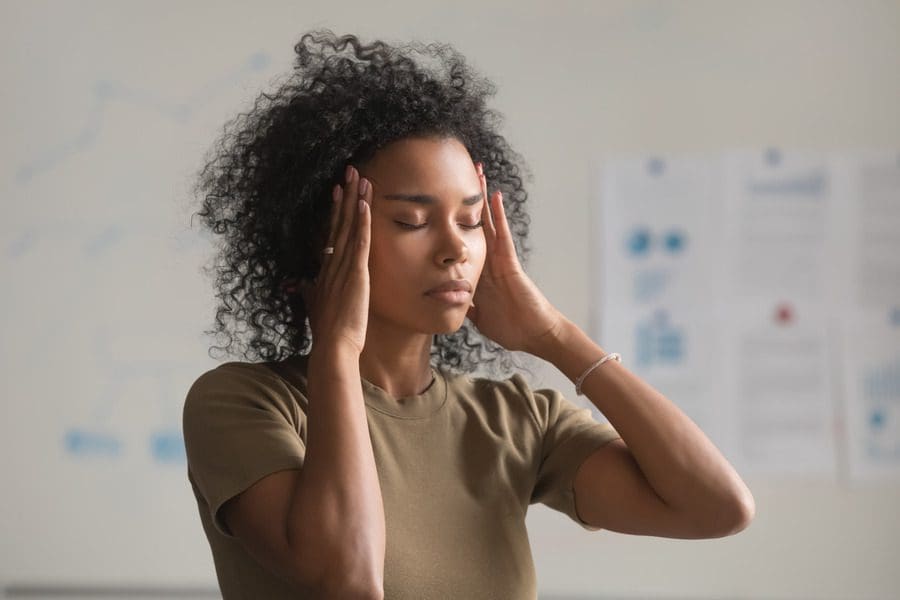To put it plainly: Migraines hurt. Not only can they cause excruciating pain, but no one is really “safe” from getting them, as they affect people of all ages. Luckily, healthy habits and simple at-home remedies can stop migraines in their tracks – or, at the very least, provide some relief. Let’s discuss.
What Is a Migraine?
A migraine is a headache that causes severe throbbing pain or a pulsing sensation, usually on one side of the head. How people experience migraines can differ; for instance, some migraines last hours, while others last days. Some people can tell that a migraine is coming because they experience what is known as “aura,” a term for visual disturbances; others might never experience this.
Migraine Symptoms
Migraines typically have four stages, though not everyone experiences each stage.
- Stage 1 – Prodrome: One or two days before the onset of a migraine, a person may experience constipation, mood changes, food cravings, increased urination, fluid retention, and frequent yawning.
- Stage 2 – Aura: The aura stage can occur either right before or during a migraine. These disturbances start gradually, building up over several minutes and lasting as long as an hour. Examples of auras include vision loss, a pins-and-needles feeling in an arm or leg, difficulty speaking, and weakness or numbness in the face or on the side of the body.
- Stage 3 – Attack: During a migraine, you may experience pain on one side of your head; pain that throbs or pulses; sensitivity to light, sound, smell, or touch; and nausea and/or vomiting.
- Stage 4 – Postdrome: After a migraine, it’s common to feel drained, confused, and just wiped out for the rest of the day.
Migraine Relief & Prevention
Find a Calm Environment
At the first sign of a migraine, take a break. Turn the lights off, apply hot or cold pressure to your neck or forehead, and sip on caffeine if you have some available.
Exercise
Experts don’t advise exercising in the middle of a migraine attack, but if you catch your migraine early and feel well enough, exercising is a good way for your body to release endorphins, which are chemicals that fight pain.
Do Yoga
Because yoga is a slower form of exercise, it has its own benefits for migraines, including reducing the number of attacks you may experience and how intense the symptoms are.
Get Some Sleep
Sleep and migraines are a catch-22; migraines can cause you to lose sleep, but a lack of sleep can cause a migraine. The best thing you can do is establish regular sleep hours and make sure you take time to unwind at the end of the day. Lessen distractions, turn screens off, and check any medication you may be taking for hidden caffeine.
Eat Smart
Your diet can heavily influence your migraines. Try to eat around the same time every day, don’t skip meals, keep a food journal to find potential food triggers, and avoid those foods.
Manage Stress
Stress is a major trigger for migraines. While we know it’s impossible to avoid stress completely, it’s important to find ways to manage your stress, such as delegating and dividing larger tasks into smaller, more manageable ones, taking breaks when you feel overwhelmed, finding time to do things you enjoy, or meditating throughout your day as needed.
Do you have any tips for dealing with migraines? Share them with us in the comments below!







